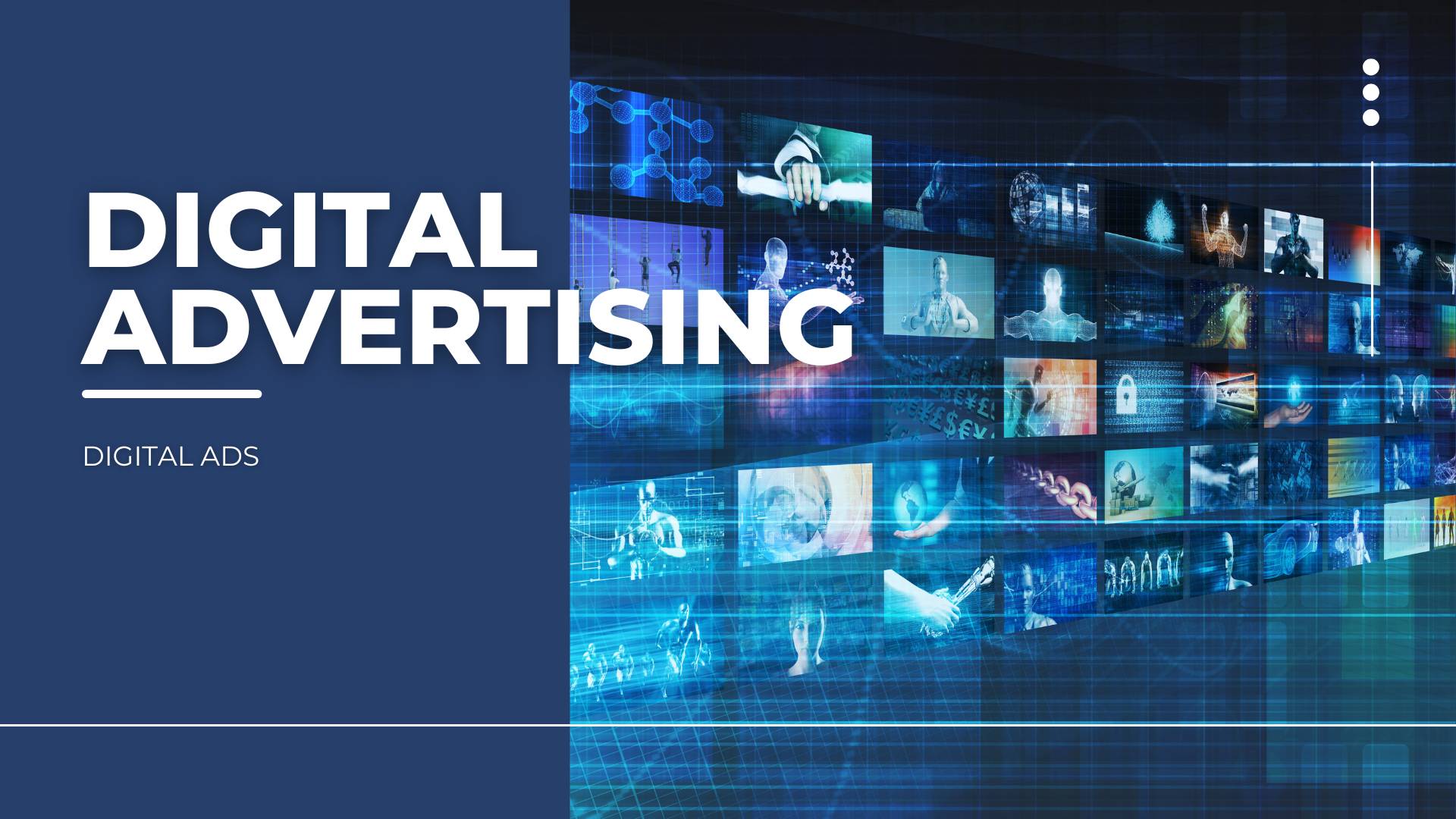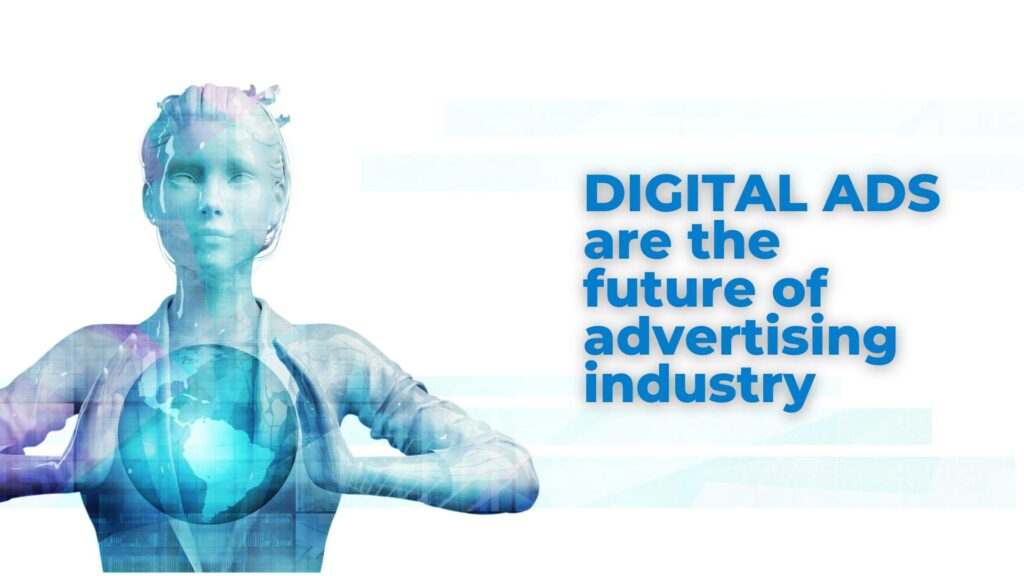
Digital advertising and digital ads
Digital ads are everywhere. They are on our computers, on our phones, and on our TVs. They are even in our physical mailboxes. And, as we all know, they are very effective.
Digital advertising is a form of marketing that uses digital technologies to reach and engage consumers. This includes online advertising, mobile advertising, and social media advertising.
There’s no question that digital advertising is on the rise. In 2021, global ad spend on digital advertising was $521.02 billion, and in 2022 is expected to be $602.25B. Digital advertising is a growing industry, and it is expected to continue to grow in the coming years. By 2019, digital advertising was projected to account for nearly half of all ad spending worldwide. So, what exactly are digital ads? Let’s take a look.
What are digital ads?
Digital ads are online advertisements that take many different forms, from static banner ads to rich media and video ads such as instream ads, outstream ads. They can appear on websites, apps, and social media platforms, and are usually delivered through ad networks or demand-side platforms (DSPs).
Advertisers use digital ads to reach their target audiences with relevant messages that can lead to conversions, such as sales or sign-ups.
Digital ads are a form of advertising that uses digital technologies, mainly on the Internet, but also including mobile phones, display advertising, and any other digital medium.Digital ads are delivered through a variety of channels, including search engines, websites, social media, email, and mobile apps. They can be targeted to a specific audience, or they can be general ads that are shown to a wide range of people.
Advertisers use a variety of methods to target their ads, including keywords, interests, demographics, and even location. They can also target their ads to specific devices, such as smartphones, tablets, and laptops.
Ads can be placed on websites in a variety of ways, including banner ads, text ads, video ads, and even pop-ups. They can also be placed on social media platforms, such as Facebook, Twitter, and LinkedIn.
Digital ads are often used to generate leads, or sales, for a business. They can also be used to build brand awareness, or to promote a product or service.
Digital ads can be a great way to reach a large audience, and they can be very effective at driving traffic to a website. However, they can also be a source of invalid traffic, which can negatively impact a website’s ad revenue.
What are the different types of digital ads?
There are many different types of digital ads, but some of the most common include:
Banner ads: These are static or animated image ads that are typically displayed at the top or bottom of webpages.
Text ads: These are short text-based ads that are usually displayed alongside search results or other web content.
Video ads: Video ads that can appear before, during, or after online video content or standalone.
Rich media ads: These are interactive ads that often include audio, video, or animation. They can be used to create an immersive experience for users.
What are the benefits of digital advertising?
There are several benefits of digital advertising for businesses, including:
Increased reach: Digital ads can be seen by billions of people around the world.
Higher engagement: Digital ads are more likely to be seen and clicked on by consumers than traditional ads.
More affordable: Digital advertising is more cost-effective than traditional advertising.
More effective: Digital ads are more likely to generate leads, sales, and website traffic than traditional ads. Digital ads offer higher ROAS and higher ROI.
Flexible: Digital advertising can be customized to reach specific audiences.
Measurable: Digital advertising can be tracked and measured for effectiveness.
Digital advertising is an essential part of any marketing strategy. If you’re not already using digital ads, now is the time to start. If you want to effectively monetize your website refer to our article on effectively monetizing your website with digital ads.
Targeting of digital ads
Digital ads are everywhere. You see them on websites, in apps, and even on TV. They’re everywhere, and they’re usually targeted to specific audiences.
Digital advertisers use a variety of techniques to target their ads. They can target by location, by demographics, by interests, and even by behavior.
Location-based targeting
One of the most common ways that digital advertisers target their ads is by location. They can target ads to specific countries, states, cities, or even neighborhoods.
Demographic targeting
Digital advertisers can also target their ads by demographics. They can target ads to specific age groups, genders, income levels, and more.
Interest-based targeting
Another common way that digital advertisers target their ads is by interests. They can target ads to people who are interested in specific topics, products, or services.
Behavioral targeting
Digital advertisers can also target their ads by behavior. They can target ads to people who have shown certain behaviors, such as buying products online, researching products online, or visiting certain websites.
Targeting ads to specific audiences is a powerful way to ensure that your ads are seen by the people who are most likely to be interested in them. By using these techniques, advertisers can ensure that their digital ads are reaching the people who are most likely to convert.
What are the disadvantages of digital advertising?
There are also some disadvantages to using digital advertising, including:
- Takes time to set up: One of the biggest disadvantages of digital advertising is that it can take some time to set up your campaigns. This is because you need to create your ads, target your audience, and track your results.
- Can be distracting: Another disadvantage of digital advertising is that it can be quite distracting for users. This is because ads are often placed in front of or next to content that people are trying to consume.
- Requires ongoing optimization: Finally, digital advertising requires ongoing optimization to be effective. This means that you need to constantly monitor your campaigns and make changes as needed. If you don’t do this, your campaigns will eventually become less effective.
Digital advertising is a powerful marketing tool that can help you reach your target audiences and achieve your marketing goals. However, it’s important to weigh the pros and cons of digital advertising before you decide if it’s the right marketing strategy for your business.
What are digital channels?
Digital channels are the means by which digital advertising is delivered. There are a variety of digital channels available to advertisers, each with its own strengths and weaknesses.The most common digital channels are:
Display advertising: This includes banner ads, rich media ads, and video ads. Display advertising is a catch-all term for any type of digital advertising that is not a search ad.
Search advertising: This is the most common form of digital advertising. Search ads such as Google search ads and Apple search ads are purchased through an auction system, where advertisers bid on keywords that are relevant to their product or service. The ads that appear in the search results are determined by a number of factors, including the quality of the ad, the relevance of the keywords, and the price that the advertiser is willing to pay.
Social media advertising: Social media platforms, such as Facebook, Twitter, and LinkedIn, offer advertisers a way to reach their target audience through paid ads. Social media advertising is typically sold on a cost-per-click (CPC) or cost-per-impression (CPM) basis.
Mobile advertising: Mobile advertising is any form of digital advertising that is delivered through a mobile device, such as a smartphone, tablet, or laptop. Mobile advertising can be delivered through a variety of channels, including banner ads, rich media ads, video ads, and search ads.
Native advertising: Native advertising is a type of digital advertising that is designed to blend in with the content of the site on which it is displayed. Native ads are often sold on a cost-per-click (CPC) or cost-per-impression (CPM) basis.
Programmatic advertising: Programmatic advertising is a type of digital advertising that is purchased through an automated process, using software to buy and place ads. Programmatic advertising is typically sold on a cost-per-thousand-impressions (CPM) basis.
The choice of digital channel depends on a number of factors, including the type of product or service being advertised, the target audience, the budget, and the objectives of the campaign.
Display advertising is the most common form of digital advertising, because it offers a wide range of ad formats and placements. However, display advertising can be expensive, and it is not always the most effective channel for reaching the target audience.
Search advertising is the most effective way to reach potential customers who are actively searching for products or services like the ones being advertised. However, search advertising can be expensive, and it is not always the most appropriate channel for every advertiser.
Social media advertising is a good way to reach potential customers who are active on social media platforms. However, social media advertising can be expensive, and it is not always the most effective channel for reaching the target audience.
Mobile advertising is a good way to reach potential customers who are using mobile devices. Mobile advertising can be delivered through a variety of channels, including banner ads, rich media ads, video ads, and search ads.
Native advertising is a good way to reach potential customers who are looking for information that is relevant to the site on which the ad is displayed. Native advertising can be sold on a cost-per-click (CPC) or cost-per-impression (CPM) basis.
Programmatic advertising is a good way to reach potential customers who are active on a variety of websites. Programmatic advertising can be sold on a cost-per-thousand-impressions (CPM) basis.
What are the challenges of digital advertising?
Digital advertising is one of the most effective ways to reach your target audience and promote your product or service. However, it’s not without its challenges. Here are some of the most common challenges of digital advertising.
- Ad blocking
Ad blocking is a growing problem for digital advertisers. More and more internet users are installing ad blockers, which prevent ads from being displayed on websites. This is a major challenge for digital advertisers, as it means that their ads are not being seen by potential customers.
- Click fraud
Click fraud is another major challenge for digital advertisers. Click fraud occurs when someone clicks on an ad, but does not actually purchase the product or service that is being advertised. This can be a major problem for digital advertisers, as it can eat into their advertising budget and cause them to lose money.
- Ad fraud
Ad fraud is another type of fraud that can occur in digital advertising. Ad fraud occurs when someone creates a fake ad, or uses a stolen credit card to pay for an ad. This can be a major problem for digital advertisers, as it can lead to them losing money and damaging their reputation.
- Ad fatigue
Ad fatigue is a major problem for digital advertisers. Ad fatigue as the digital advertising term means the fatigue occuring when people see the same ad over and over again, and eventually become desensitized to it. This can lead to people ignoring the ad, and eventually stop clicking on it altogether.
- Banner blindness
Banner blindness is another problem that can occur in digital advertising. Banner blindness occurs when people see a banner ad, but do not click on it because they do not think it is relevant to them. This can be a major problem for digital advertisers, as it can lead to them losing money.
- The Pace of Change
The digital advertising landscape is constantly changing. New platforms, technologies, and strategies are constantly being introduced. This can make it difficult for businesses to keep up.
- Competition
There’s a lot of competition in the digital advertising space. With so many businesses vying for attention, it can be hard to stand out from the crowd. Competition of ad networks, on the other hand, will be for the benefit of publishers.
- Reaching the right people: Well targeting
It can be difficult to target your ads to the right people. You may want to target a specific demographic, but if your ad is not reaching that demographic, it’s not doing its job.
- Getting people to act
Once you’ve reached your target audience, you need to get them to take action. Whether you want them to click on your ad, sign up for your newsletter, or make a purchase, you need to make sure your ad is compelling and effective.
- Measuring results
It can be difficult to measure the results of your digital advertising campaigns. You may need to invest in analytics tools to track how people are interacting with your ads.
- Invalid traffic
Invalid traffic, or IVT, is a type of traffic that is not legitimate and is often used to generate fraudulent clicks or impressions. IVT can come from bots, automated scripts, or even real people who are paid to click on ads. Invalid traffic can be difficult to detect and can cause problems for advertisers, publishers, and even users.
Digital advertising is a powerful tool, but it is not without its challenges. These are just some of the most common challenges that digital advertisers face.
What’s the future of digital advertising?
It’s no secret that the digital advertising landscape is constantly evolving. With new technologies and platforms emerging all the time, it can be hard to keep up with the latest trends. But if you want to stay ahead of the curve, it’s important to stay up-to-date on the latest developments in the digital advertising world.
So, what does the future hold for digital advertising? Here are a few trends to watch out for:
- Increased focus on mobile advertising
As more and more people use smartphones and tablets to access the internet, it’s no surprise that mobile advertising is on the rise. In fact, research shows that mobile ad spending is expected to reach $196 billion by 2021. This means that if you’re not already focusing on mobile advertising, you need to start now.
- Greater use of AI and machine learning
Artificial intelligence (AI) and machine learning are two of the most buzzed-about technologies right now, and they’re also having a major impact on digital advertising. These technologies are being used to create more personalized and relevant ads, and they’re also helping to improve ad targeting.
- More video advertising
Video is one of the most popular types of content online, so it’s no surprise that video advertising is also on the rise. In fact, research shows that video ad spending is expected to reach $27 billion by 2021. This trend is being driven by the increasing popularity of video streaming services like YouTube and Netflix.
- Greater use of programmatic advertising
Programmatic advertising is a type of advertising that uses automated technology to buy and place ads. This form of advertising is becoming increasingly popular, as it allows advertisers to target specific audiences more effectively.
- Increased use of native advertising
Native advertising is a type of advertising that blends in with the surrounding content. This form of advertising is becoming more popular as people become more aware of traditional advertising techniques.

The future of digital advertising is looking bright. Digital ad tech companies follow the latest developments to adapt new strategies and ad types for maximum effectiveness and revenue. These are just a few of the trends that we think will shape the industry in the years to come. So, if you want to stay ahead of the curve, make sure to keep an eye on these trends.
Instead of a conclusion
Digital advertising is a form of marketing that uses digital technologies to reach and engage customers. Digital ads are delivered through online channels such as search engines, websites, social media, and email. They are often interactive and can be tailored to the individual user’s interests.
Digital advertising is a rapidly growing industry and is the future of all ads.
There are many benefits to digital advertising. businesses can target a global audience with minimal effort and expense. They can also track the success of their campaigns and adjust them accordingly. Additionally, digital ads are often more engaging and interactive than traditional advertising methods.
Digital advertising is not without its challenges, however. The most common complaint is that digital ads are intrusive and disruptive. Additionally, some users find them difficult to understand. As a result, businesses must be careful to create ads that are relevant and useful to their target audience.
Despite these challenges, digital advertising is a powerful tool that can help businesses reach a wide audience. When used correctly, it can be an effective way to build brand awareness, generate leads, and drive sales.






